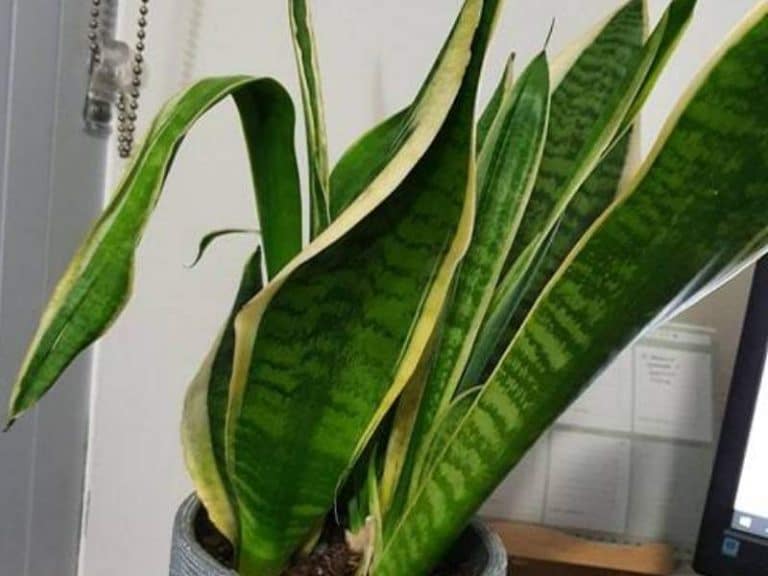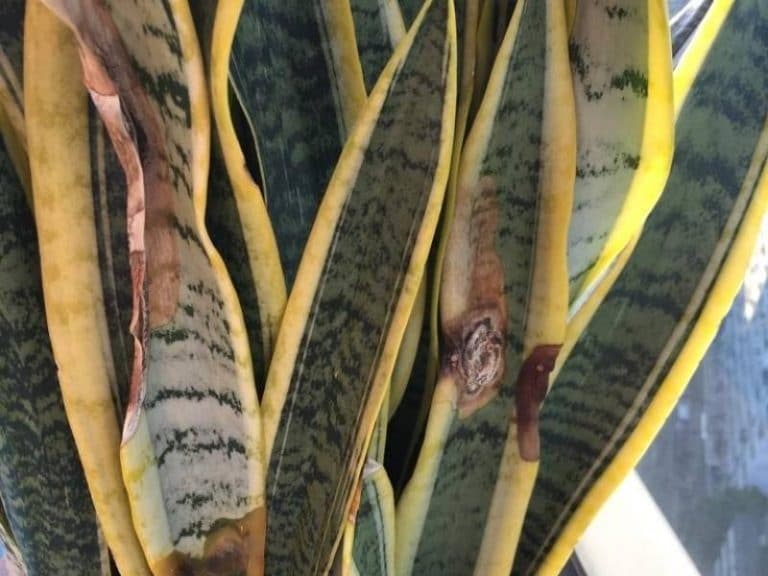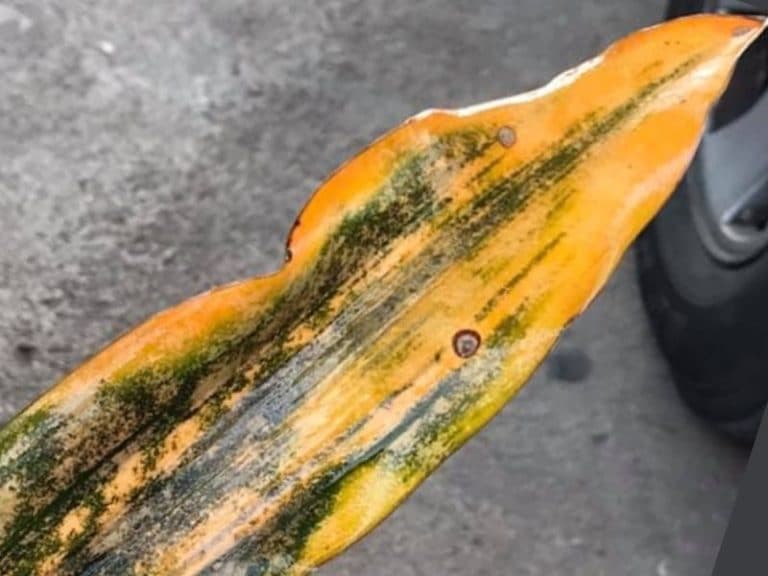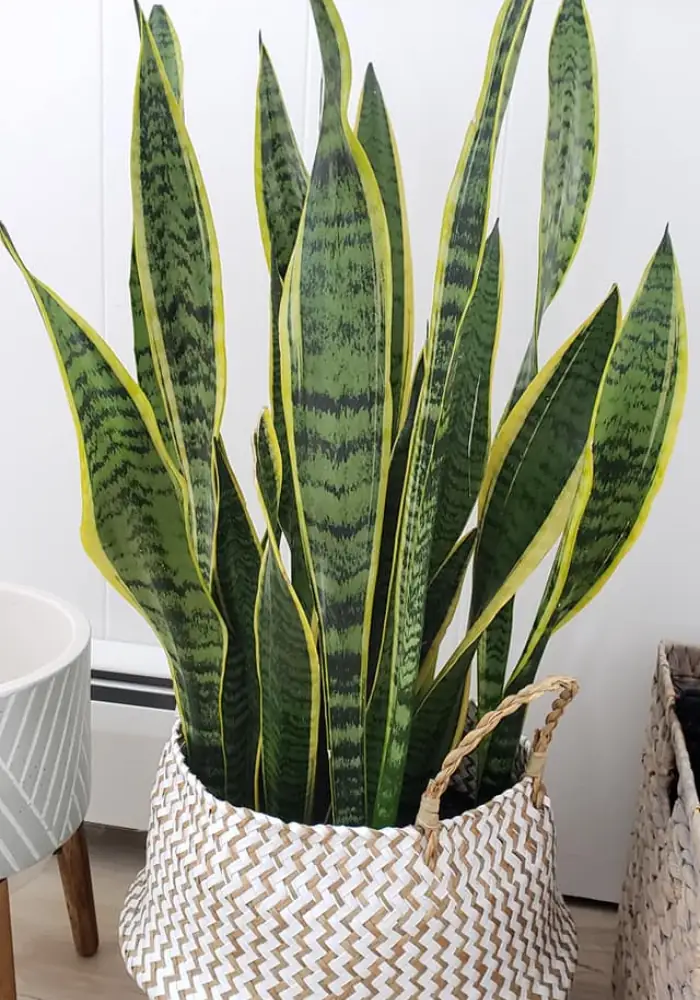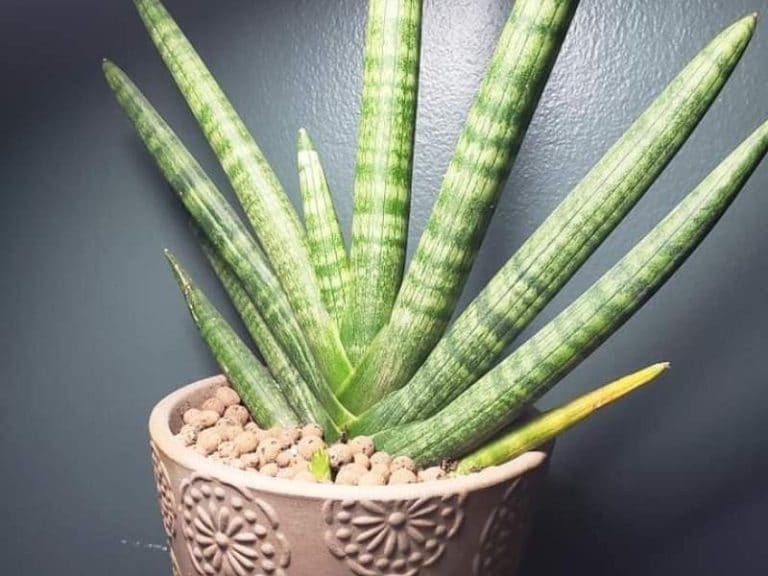Wrinkled Snake Plant Leaves: Causes + Fixes
Wrinkling in snake plants (Sansevieria) is a common sign that something is not right. It is mostly related to water problems, but other factors can also make your snake plant shrivel and wilt.
A wrinkled snake plant is a sign of underwatering, high temperatures, or too much sunlight. Move the plant to a spot where it will receive bright indirect light then water it only the soil to dry out to fix the wrinkled leaves. Maintain an optimum temperature of 55-85°F to keep sansevieria healthy.
Although most of the time, the wrinkling is caused by either overwatering the snake plant or lack of sufficient water, the use of the wrong soil type and fertilizers also cause your snake plant leaves to wrinkle.
Causes of a Wrinkled Snake Plant
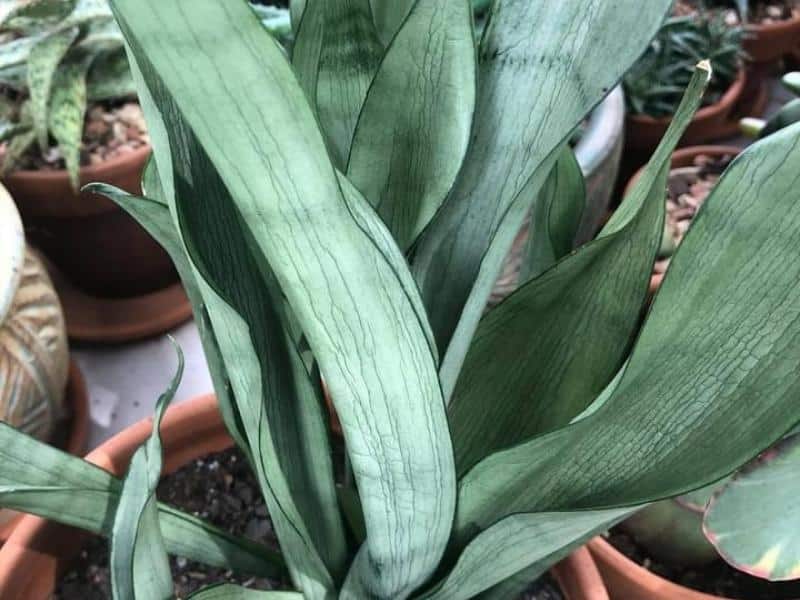
The snake plant grows by forming dense stands via its creeping rhizome when the plant is healthy. Its leaves are stiff, and a mature one is usually dark green with light grey stripes. The leaves can grow to the height of two to six feet.
But if the environment is not favorable, then the leaves start to get wrinkled.
Here are the causes of wrinkling in snake plants:
Wrinkling due to hot weather
You’ll notice that your snake plant leaves are fuller dark green during spring to summer, and the grey stripes are more visible. In the hot season when temperatures are high, the leaves may start to wrinkle. Sometimes, sansevieria leaves will curl and shrink easily due to high temperatures.
Wrinkling and wilting occur because the plant will be losing more water than it’s getting. If you fail to water it more frequently, snake plant leaves will curl and shrivel easily.
So if you were watering once in the cool season, increase the frequency during hot seasons. However, it is important not to overwater the plant as this can cause other serious snake plant problems such as root rot.
The snake plant enters a dormant state in the fall. At this point, it needs less watering. However, this state lasts through the winter, and there will be no growth.
Watering
It is not always a good idea to overwater or reduce the frequency of watering your snake plant. The frequency of watering sansevieria depends on whether it’s the wet season, dry season, or if it’s in its dormant state.
Snake plants will show signs of wrinkling on their leaves when they don’t have enough water. In addition, brown tips on snake plant leaves occur as a sign the plant is drying. To confirm the cause of wrinkling is underwatering, check the soil to see if it feels stiff or bone-dry.
High or low soil-drainage rate
Snake plants grow best in a well-draining soil mix because they’re not only prone to underwatering problems but also root rot from waterlogging. Sansevieria leaves will wrinkle if planted in soil that is not free-draining because the chances of overwatering are high. On the other hand, soil that does not hold water will lead to a high water loss, making the leaves wrinkle.
Also, soil that lacks minerals will make your snake plant leaves wrinkle. That is why it’s advisable to use fertilizer when planting the snake plant. Therefore if your snake plant starts to wrinkle, you may need to change it to another pot with fresh, well-drained, and mineral-balanced soil.
Too much sunlight
Too much sunlight burns the leaves of snake plants and makes them lose water at a high rate, leaving them wrinkled and curling. When placed in a spot that receives bright direct sunlight, the leaves of your sansevieria will start to curl, wrinkle, and form brown tips.
Note that if you move the plant in a dark spot, it will also lead to a wrinkled snake plant. Leaves easily lose texture as the plant struggles to get enough light for photosynthesis.
So if you don’t have an east-facing window where that plant will get sufficient light, move it now and then outside so that the plant can enjoy some sunlight for photosynthesis to take place.
Shock and stress
Snake plants may suffer shock as a result of:
- Stress during transportation
- Change of environment
- Nibbling by pets in the house
When your snake plant is stressed, the leaves start to wrinkle up slowly. Just let the plant be it will slowly adapt to the new environment and flourish again.
Pets such as cats tend to play and nibble at anything your snake plant can be affected by this behavior. Therefore if you have pets like cats in the house, protect your snake plant by hanging it in a higher place where the pets cannot reach it.
Temperature and Humidity
Snake plants do not grow well in temperatures below 10 degrees. Therefore if you see your snake plant leaves wrinkled in the winter, they’re probably being affected by temperature and humidity changes.
During the hot season, the snake plant can also be affected by extreme temperatures. A drastic change in temperature causes the leaves to wrinkle due to dehydration.
You can save your snake plant by avoiding cold drafts during winter.
Size of the pot
A small pot size limits the growth of the plant’s roots leading to stunted growth. Thus you will notice that your snake plant is not growing anymore.
On the other hand, a bigger pot may lead to overwatering of your plant leading to wrinkled leaves. Therefore ensure that you get the right-sized pot for your snake plant. The pot should also have good drainage for the water to avoid overwatering.
Root rot disease
Root rot is a common occurrence in snake plants that are overwatered. Overwatering causes the soil to be waterlogged, and this leads to the roots rotting. Waterlogged soil denies the roots of your snake plant a chance to take in nutrients required by the plant for it to flourish.
If you realize that your snake plant leaves are yellowing and wrinkling, then the plant may be having root rot. If that is the case, stop watering your snake plant and get rid of all the rotten roots. After removing the rotten roots, you can nurse your plant back to health using antifungals or charcoal powder.
Fertilizer burn
Plants need fertilizer to grow well. The snake plant also utilizes the nutrients provided by fertilizer to grow well. But if the wrong fertilizer or inappropriate amount is used, then the opposite is true. If you discover that the leaves have started to curl up and dry, then it’s time to check on the fertilizer you are using.
You can rectify this issue by flashing out excess fertilizer from the plant via regular watering. Also, you can change the soil. Transfer your snake plant to new soil that has well-balanced fertilizer.
How to Fix a Wrinkled Snake Plant
Now that you know what causes your snake plant leaves to wrinkle, you can now fix the problems. Here is how to fix the snake plant after identifying the cause of wrinkling.
- Water your snake plant once a month in the spring and once a week during dry seasons to fix wrinkling. This will fix the problem if it is caused by too much water or underwatering in sansevieria.
- Plant sansevieria in a well-draining potting mix. Soil that is well-drained and has balanced minerals will ensure that your snake plant does not suffer wrinkling.
- Apply fertilizer only once every 1-2 months during the fast-growing season. Use organic fertilizer for the best results.
- Move the wrinkling snake plant to a spot with bright indirect light. Keep your snake plants in shaded areas if you live in hot areas.
- Increase humidity in the room where snake plants are growing to stop leaves from wrinkling from the dry atmosphere. You can also use a plant humidifier for this.
- Keep your snake plant away from cold drafts. Move them to warmer areas of the house.
- 6. Water the plant using filtered water. Avoid using filtered water for watering that can easily lead to a wrinkled snake plant.
Taking care of the snake plant can be a hectic venture, but if you think of the benefits of its presence in your home, you will put in the effort to ensure it stays alive.
The snake plant is famous for cleaning the air around the house. It takes in all the carbon dioxide and produces oxygen as its waste. This way, you get to have an air freshener home thought.
Be careful of the obvious signs so that you will be quick to act to save this life-saving plant. But then again, it could be “old age,” but if you are sure of this, ensure that your mother-in-law’s tongue is in good health all its life.


